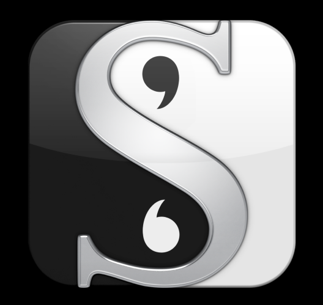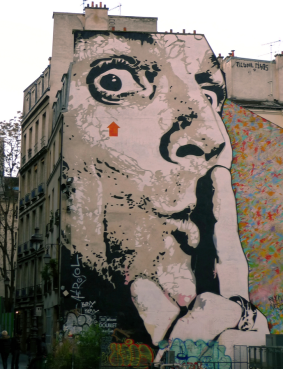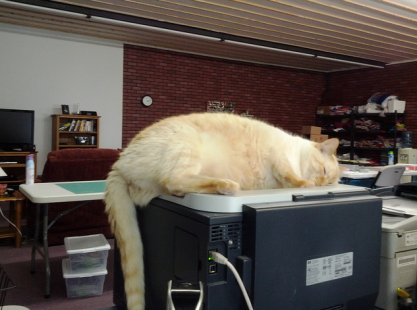Can’t Keep Up? 7 Brilliant Ways To Finish Your Story

Image via Flickr Creative Commons courtesy of Pedro Travassos
Today we have a special treat from Dr John Yeoman, PhD Creative Writing. He’s going to give us some ways to tackle one of the biggest problems plaguing writers—the inability to finish what we start.
*gets popcorn*
Take it away, John!
***
Do you live in a world of unfinished stories? Across the year, you’ve jotted scraps here and there, stuck an opening scene beneath a flowerpot, a closing line in a shopping list and a great cameo incident… well, you’ve forgotten where it is now but it was awesome.
Join the Club of Interrupted Scribes

Image via Drew Coffman courtesy of Flickr Creative Commons
You’re not alone.
We all know what happened when Coleridge was interrupted, when finishing Kubla Khan, by ‘a person from Porlock’. All that remains of his epic is an unfinished scrap.
More fragments, abandoned by great authors, have been found – centuries later – in laundry baskets, croquet boxes and golf bags than you’d believe. Or so Prof. K. K. Ruthven tells us in Faking Literature (2001). Maybe Shakespeare’s lost play Cardenio will one day be discovered beneath Donald Trump’s hair?
Improbable, yes. But so is Donald Trump.
Lost bits, found by chance, are the history of literature.
Joyce’s Ulysses consists merely of out-takes from other people’s work that he salvaged from the jakes of Dublin pubs. (Read Ulysses and see if you don’t agree.)
Seriously, have you written a dozen fine stories – almost ready to go – that you haven’t quite finished?
Once, that was my fate too. Bits lay everywhere, forlorn. My name was not Homer so I couldn’t rely on future savants piecing them together to create The Iliad.
Do you share my pain? If so, let me share with you my remedy. In fact, I have seven remedies.
Yeoman’s Seven Tested Ways To Get A Story Finished
ONE—Create your own scene hangers.

Image courtesy of Ed Dunens via Flickr Creative Commons
You know what scene hangers are – and page hangers, chapter hangers and book hangers. (They’re the last scenes in a novel written to cue a sequel.) Hangers are artful lines, scattered here and there, that tease the reader to read on.
But why waste those magic words upon the reader? Write them for yourself.
Take a notepad with several blank pages. Scribble, at the bottom of each page:
‘Little did I know that…’
‘But her wish was not to be granted,’
‘There was a shadow behind the curtain. And it moved.’
‘What would happen now? Tomorrow, he knew, was not going to be an easy day.’
And so on.
Don’t you just want to finish that story? Now it’s easy. Go back and fill in the spaces. Delete those clichéd lines. And, lo, you have a story.
TWO—Devise your own Scrivener program.

What’s Scrivener?
If you have to ask, you’re new to story telling. It’s a wondrous program that puts everything you need to complete a story in one convenient place on your computer screen.
Imagine a corkboard on your wall. In one corner, you’ve pinned character descriptions. In another, scene settings. Somewhere else you’ve stuck pictures, plot outlines, dramatic incidents, crumbs of dialogue… Plus links to web resources (research), videos and even music.
Some people do like to play music while they write, I’m told. Maybe Mahler for prose poetry. Rap for crime/suspense. It inspires terse. Jerky. Sentence fragments.
Now imagine that corkboard on your computer. Here’s the link to Scrivener (and, no, I don’t get a commission). Once learnt, it’s wonderful.
Problem is, Scrivener takes time to learn. Its Help manual is too technical for newbies and its built-in word processing program is, compared to Word, primitive.
Solution? Build your own Scrivener using the ‘sticky notes’ utility that may be on your computer right now.
My Windows 8 program lets me put up to 35 sticky notes on my desktop in a choice of six colours. I’ve assigned Green for settings, Pink for characters, Yellow for plot outlines, Blue for web links, and so forth. I can move them around the screen as I wish, to compile a story.
Each of my sticky notes will hold up to 6000 words. Potentially, that’s three whole novels in one place.
Graphics? You can’t put those in sticky notes. (At least, I can’t.) So do a montage of the pictures you need – say, of your key characters and scene settings – and make that montage your screen wallpaper. Every time you turn on the computer, you’ll be hurled into your novel – graphically.
Who needs Scrivener?
THREE—Try the ‘bricolage’ technique.

Image via Flickr Creative Commons courtesy of Linda Eng
‘Bricolage’ means a jumble of unrelated things, as in a patchwork quilt. Well, that’s what we’ve got already, haven’t we? Scraps of stories. So how can bricolage help us finish those stories?
Stop scribbling on paper. (Those little bits get lost.) Start writing on file cards.
Why? Cards are durable. You can keep them in your handbag or back pocket, ready to hand for whenever an idea strikes you. As soon as they bulge out of your pocket, toss them on the carpet and play solitaire.
You’ll see a plot take shape before your eyes. All you need do now is write other cards to fill in the gaps.
Just be sure to collate your card pack in the desired order – and hide the pack – before your spouse or other tidy person bustles in to sweep the carpet.
BTW: This idea works. I wrote one of my novels that way. But I had to lock my study door lest my wife fuss in with a broom.
FOUR—Write the END first.

Original Image via Flickr Creative Commons, courtesy of Anurag Agnihotri
This is a variation on the ‘scene hanger’ gambit.
Your closing and opening scenes should be the most powerful in your story, right? The closure sends your reader away happy, intent on buying your next book. The opener gets them, agreably, into the story itself.
So devise a great closing line. Expand it into a paragraph, then a scene. Then write the first paragraph of the story so that, in some way, it reflects the last one.
Instantly, you have a ‘book end’ effect. The story acquires an inner sense of unity. It’s a perceived ‘whole’, synthetic or not.
Take a look at the short stories you admire most. I wager, most of them will echo – in some way – elements of their closing theme in the first paragraph.
Those elements are ‘book ends’.
It’s a snap to finish a story when you know, at the very start, where it’s heading to and coming from.
FIVE—Dictate your story.

Image via Flikr Creative Commons courtesy of Zoetnet.
If you’re like me, you pen your first draft on file cards then type it laboriously into Word. That doubles your workload. Why not dictate your draft, from notes, straight into a voice recognition system? Then tidy it up?
You can lie back in your favourite chair with a glass of elderflower lemonade and bark to your willing slave: “Begin!”
I confess I’ve never mastered voice recognition. But I do know that a member of my story coaching program, Writers’ Village Academy, uses Dragon to create her stories. And very good they are.
I also know that Erle Stanley Gardner put out 66,000 words a week, and kept several secretaries on the go, by using a Dictaphone. And the prolific UK author Barbara Cartland would ‘write’ as many as five novels simultaneously by lying in her bath and dictating to her secretary. A willing slave.
Well, we can always dream…
SIX—Use a software program.

“Assistant” not included.
You’ll find a wealth of clever software programs on the web, many of them free, that will help you organize your work, brainstorm or mind-map. Making every component of a story visual is one step towards finishing the story.
It’s no longer an idea in your head. It’s an object. You can play games with it.
You’ll find a lot of useful programs for writers here. (But please do come back.)
The Top 55 Apps for Writers in 2016
At a pinch, you could even use Excel. Or, if you like a challenge, the internal hyperlink utility in Word. For example, you can write ‘Jim goes to the farm‘ then hyperlink ‘Jim’ and ‘farm’ to their character and setting descriptions elsewhere in the same file (or, if you really like a challenge, on the web).
The problem is, I’ve found, the more you play with software the more you play. And the darn story never does get done.
Keep it simple.
SEVEN—Don’t finish the story at all.

You wrote those scraps for a reason. Each had its own merits. Could any one of them yield you a flash fiction story if you tidied it up, added a start and finish, and wove in a structure?
Some of the best flash fiction stories have grown out of a simple punchline, anecdote or dialogue snippet.
Just remember the Golden Rule: even a flash fiction story needs structure.
You can read The Ultimate Guide to Writing Very Short Stories here. (But please come back.)
So you’re still haunted by bits of stories (or a bit of a story) floating around your head or home? No problem. Here is your Bonus Tip #8:
Don’t even bother to write them down.
One sign of born story tellers, like us, is that we live in our minds. We tell stories for ourselves. It’s not imperative that anybody else overhears our thoughts, or even buys our stories. If we create them for our own fun alone there’s no compulsion to finish them. Is there?
Worth a thought…
Well, I had intended to write a compelling last line for this post, to finish it conclusively, but on reflection there’s no point. I’ve had my fun.
What about you?
How do you finish the work you’ve started? What tips can you share with other writers? Share them here. And have fun!

Dr John Yeoman, PhD Creative Writing, is a top-rated Amazon novelist. He judges the Writers’ Village story competition and is a tutor in creative writing at a UK university. He has been a successful commercial author for 42 years. You can find a wealth of ideas for writing stories that succeed in his free 14-part course at Writers’ Village.
Other helpful links:
The Top 55 Apps for Writers in 2016
The Ultimate Guide to Writing Very Short Stories
Thank you, John for taking the time to help us out! Remember that comments for guests count double in my monthly contest so tell us about your unfinished bits of genius. Did you ever find a way to bring them to fruition? How did you do it? Did you use one of John’s suggested techniques or something else? Did you find an AH-HA moment today?
I LOVE hearing from you guys!
To prove it and show my love, for the month of APRIL, everyone who leaves a comment I will put your name in a hat. If you comment and link back to my blog on your blog, you get your name in the hat twice. What do you win? The unvarnished truth from yours truly. I will pick a winner once a month and it will be a critique of the first 20 pages of your novel.
Upcoming Classes!
Back by popular demand! Bullies & Baddies—Understanding the Antagonist
All fiction must have a core antagonist. The antagonist is the reason for the story problem, but the term “antagonist” can be highly confusing. Without a proper grasp of how to use antagonists, the plot can become a wandering nightmare for the author and the reader.
This class will help you understand how to create solid story problems (even those writing literary fiction) and then give you the skills to layer conflict internally and externally.
Beyond craft and to the business of our business?
How and WHY are we using FREE!?
Making Money with FREE! As a bonus for this class, my friend Jack Patterson who’s so far sold over 150,000 books to come and teach us how to ROCK the newsletter. This is in excess of two hours of training and the recording (as always) comes with purchase.
For those who need help building a platform and keeping it SIMPLE, pick up a copy of my latest social media/branding book Rise of the Machines—Human Authors in a Digital World on AMAZON, iBooks, or Nook.





